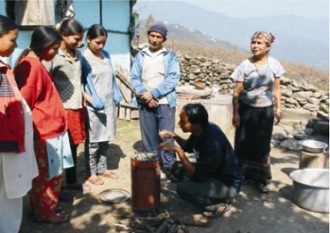Ecotoxicol Environ Saf. 2011 Jun 28
Multiple approaches to evaluate the toxicity of the biomass fuel cow dung (kanda) smoke.
Lal K, Mani U, Pandey R, Singh N, Singh AK, Patel DK, Singh MP, Murthy RC.
Inhalation Toxicology Division, Indian Institute of Toxicology Research, Mahatma Gandhi Marg, PO Box No. 80, Lucknow 226001, U.P, India.
Cow dung (Kanda) is a major source of energy in rural and urban population of developing countries and is burnt in traditional open stoves in confined space of kitchen without proper ventilation. In epidemiological studies, biomass fuel smoke has been reported to be responsible for several respiratory disorders in exposed population.
In a laboratory experiment, female wistar rats were exposed to kanda smoke for 60min/day over a period of 12 weeks. Chemical analysis of smoke showed the presence of PAHs. The increase in CYP1A1, GST-ya, GST-yc expression was found in 12 week exposed lung tissues as compared with controls. The exposure to smoke resulted in significant alteration in the BALF cells in the form of clustering of alveolar macrophages and giant cell formation with vacuolated cytoplasm. The macrophages also showed thickness and villi like projections on the cell surface thus reducing their phagocytic activities.
Histopathological changes in lung tissue were manifested in the form of damage to bronchiolar epithelium, edema and thickening of alveolar septa and emphysema after 4 and 8 week of exposure. These findings suggest that exposure to kanda smoke increases pulmonary tissue damage and may result in various forms ofrespiratory infections in the exposed popultion.



